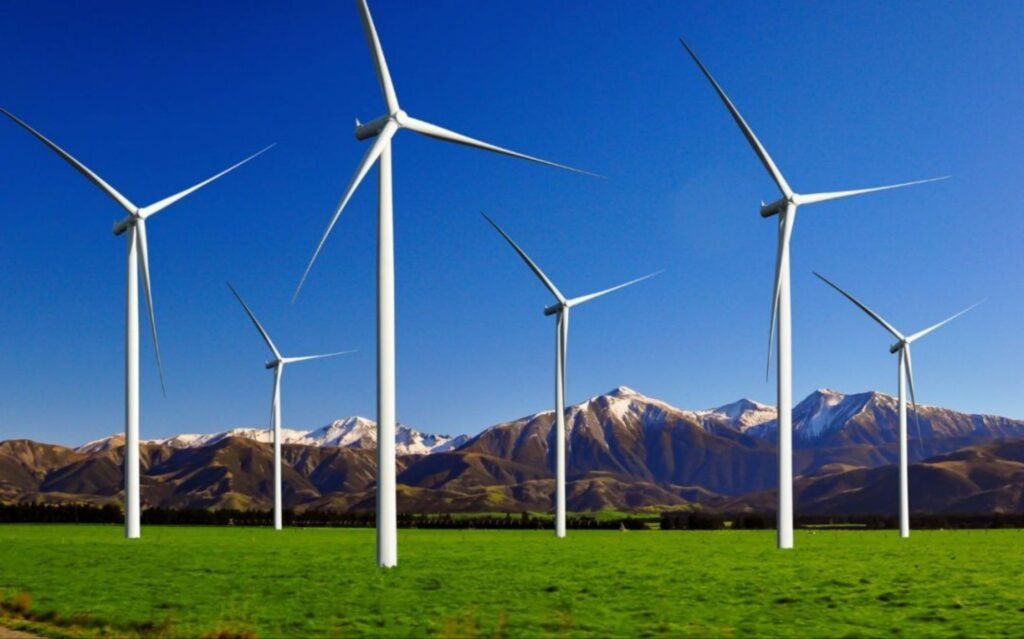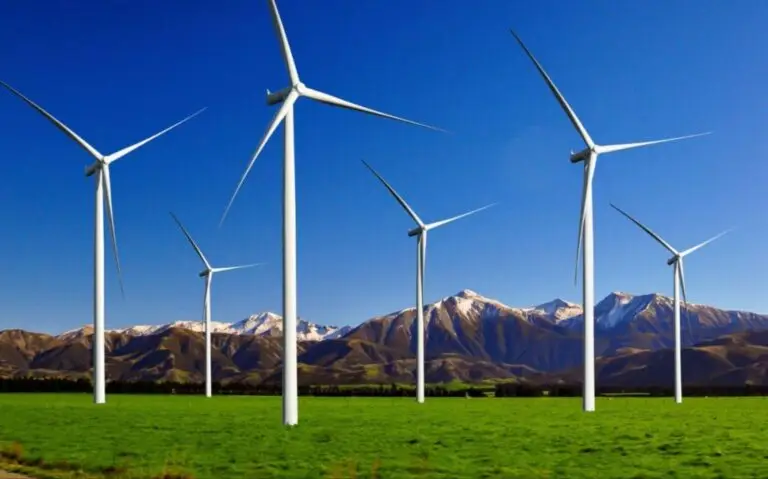
India’s energy sector is undergoing a significant transformation as the country shifts from traditional coal reliance to greener, more sustainable solutions. At the forefront of this transition are two major players in the wind energy market: Inox Wind and Suzlon Energy. While both companies are pivotal in advancing India’s renewable energy landscape, they each play distinct roles within the industry.
Inox Wind focusses on manufacturing wind turbines and offering comprehensive wind farm solutions, whereas Suzlon Energy combines turbine production with extensive operational and management services for wind farms.
In this article, we will explore the origins and current operations of these two companies. We will conduct a detailed fundamental analysis of their financial performance, comparing key metrics such as revenue growth, profitability, and debt management. Our goal is to assess which company stands out as the stronger investment in India’s growing energy sector.
Company Overview
Inox Wind
Inox Wind, founded in 2009, is a leading wind energy solutions provider in India. The company offers end-to-end turnkey solutions, from conception to commissioning and O&M. With four manufacturing plants across Gujarat, Madhya Pradesh, and Himachal Pradesh, Inox Wind has a production capacity of 1,600 MW. The company generates revenue through manufacturing wind turbine generators, providing turnkey wind farm projects, and offering services like wind resource assessment and infrastructure development.
Suzlon Energy
Suzlon Energy, founded in 1995, is a leading global wind energy company headquartered in India. With over 16,000 employees across 25 countries, Suzlon has installed more than 20.8 GW of wind energy in 17 countries. The company manufactures wind turbines ranging from 600 kW to 2.1 MW capacity and holds a 10% global market share.
In India, Suzlon dominates with 111+ wind farms, an installed capacity exceeding 14,820 MW, and a 32% market share. Suzlon pioneered the ‘Concept to Commissioning’ model and has expanded into solar power, offering wind-solar hybrid solutions. The company’s installations reduce over 53.37 million tonnes of CO2 emissions annually.
Industry Outlook
The renewable energy industry, particularly the wind energy segment, is experiencing a substantial surge globally. Wind power is at the forefront of this revolution, driving nations towards a sustainable future. Governments worldwide are implementing ambitious policies to support wind energy development, recognising its potential to reduce carbon emissions and enhance energy security.
The sector recently achieved a remarkable milestone of 1 terawatt (TW) of installed capacity. Furthermore, industry projections suggest that the next terawatt will be reached in less than a decade, indicating a significant acceleration in growth.
India, as the world’s third-largest electricity producer and consumer, is making significant strides in wind energy development. The country’s growing population and increasing per-capita energy consumption are driving demand for clean power sources. Wind energy, along with solar and hybrid solutions, is playing a crucial role in reducing India’s dependence on imported fossil fuels. The nation currently ranks fourth globally in total wind installations.
The government’s commitment to renewable energy is evident in its ambitious target of reaching 500 GW of non-fossil energy capacity by 2030. Additionally, the recent budget allocation for the power sector has increased by 50%, with substantial funds directed towards green hydrogen, solar power, and green-energy corridors. This strong government support, coupled with 100% FDI allowance in the power sector, has attracted significant foreign investment, totaling US$ 18.28 billion between April 2000 and March 2024.
At the COP26 conference, India presented five key elements of its climate action plan, including ambitious targets for renewable energy adoption and carbon emission reduction. Furthermore, the integration of wind-solar hybrid projects with energy storage systems is emerging as a reliable, round-the-clock renewable energy source. This innovation, combined with the potential for high plant load factors, is revolutionising the renewable energy landscape in India and setting a model for other developing nations to follow.
Financial Highlights
Revenue & Net Profit
Suzlon’s revenue growth has been substantial over the past five years. The company’s revenue increased from Rs. 2,972.85 crore in FY20 to Rs. 6,529 crore in FY24, representing a compound annual growth rate (CAGR) of 21.73%. Notably, Suzlon experienced a significant jump in revenue from FY21 to FY22, nearly doubling from Rs. 3,345.72 crore to Rs. 6,581.78 crore.
In contrast, Inox Wind’s revenue growth has been more moderate but steady. The company’s revenue grew from Rs. 760.19 crore in FY20 to Rs. 1,743 crore in FY24, achieving a CAGR of 23.06%. However, Inox Wind’s growth pattern has been less consistent than Suzlon’s. The company experienced a dip in revenue from FY20 to FY22, dropping to Rs. 624.62 crore, before rebounding strongly in FY24.
Suzlon’s net profit has been volatile over the five-year period. In FY20, the company made a loss of Rs. -2,692 crore. It has since recovered to profitable levels. As of FY24, the company has rebounded to a profit of Rs. 660 crores. Meanwhile, Inox Wind has consistently reported losses, though the magnitude has varied. Its loss narrowed from Rs. 671 crore in FY23 to Rs. 53 crore in FY24, showing some improvement.
Profitability Ratios
Suzlon maintained positive operating margins from FY21 to FY24, averaging 6% over the five-year period, demonstrating more consistent operational efficiency.. However, it showed significant improvement in FY24 with a positive 15% margin. Conversely, Inox Wind’s operating margins have been negative for most of the period, averaging -22% over five years.
Suzlon’s net profit margins have been increasing and are positive for the last 2 years. It went from from -91.77% in FY20 to 10.99% in FY23, with a five-year average of -15.51%. Inox Wind’s net profit margins have been consistently negative, with a five-year average of -44.21%, though it showed improvement in FY24 with a -2.81% margin.
Future Plans Of Suzlon Energy
- Discontinuation of the reverse auction, better demand visibility with bidding trajectory, repowering policy, open access policy, waiver of ISTS charges, the introduction of wind-specific RPOs, and finally improvement in technology resulting in higher productivity have revived the momentum in the wind sector.
- Suzlons aims to maintain or potentially increase its market share, which has historically been around 30%.
- The company has a robust order book of 3.8 GW, mostly to be executed over the next two years. Moreover, analysts project deliveries of 1.5GW and 2GW for FY25 and FY26, respectively.
Suzlon is also expanding its manufacturing capacity from the current 3.5-4 GW per year. Restarting of the Pondicherry facility in phases could further boost output to over 4.5 GW annually. - Expanding production capacity at its Daman plant will help meet rising demand.
- The management is focussing on quality orders with better margins and timely execution to improve financial performance.
Future Plans Of Inox Wind
- The company expects to benefit from MNRE’s trajectory for auctioning 250 GW of capacity until FY27-28.
- The execution of a 2.7 gigawatt order book and target of 2 gigawatts of annual execution in the medium term.
- Achieving net debt-free status within H1 FY ’25 through improved cash flows and strategic financial management.
- Introduction of the 4.X megawatt wind turbine platform to set new industry benchmarks and maintain a competitive edge.
- The company will focus on further strengthening and deleveraging its balance sheet through strategic capital infusions.
- Transition to 3-megawatt wind turbines and ramp up production, aiming for gigawatt-scale annual execution.
- Inox Wind aims to expand its O&M business through both organic and inorganic growth strategies.
Conclusion
As India continues its shift towards sustainable energy solutions, both Inox Wind and Suzlon Energy are positioned to play pivotal roles in the wind energy sector. Suzlon, with its extensive global reach and robust order book, is capitalising on its established market presence and technological advancements to drive growth.
The company’s significant revenue increases, strategic expansion plans, and improvements in financial health suggest a promising trajectory. On the other hand, Inox Wind, despite facing financial challenges, is making strides with its production capacity and innovative projects. The company’s focus on reducing debt and enhancing operational efficiency points to a potential rebound and growth in the competitive wind energy landscape.
Suzlon’s large order book and capacity expansions position it well to benefit from the sector’s growth, while Inox Wind’s strategic plans and focus on innovation could help it gain a stronger foothold.
Next post :- Orient Technologies IPO: Issue To Open On August 21 To Raise Rs 214.76 Cr

